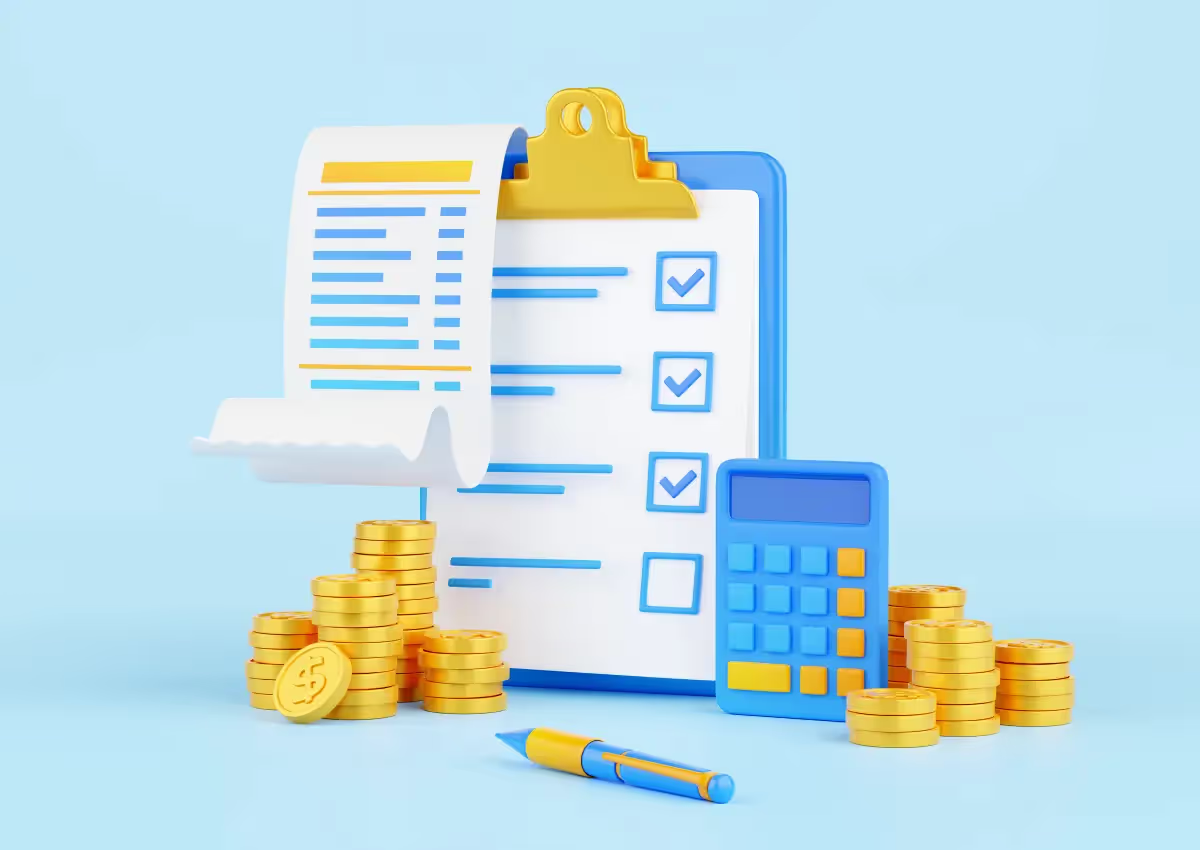Lessor vs. lessee: Understanding the key differences
Learn the main differences between lessor vs. lessee, including their roles, responsibilities, and how lease agreements work for both parties.

Accounting software has changed how accounting professionals manage everything from assets and liabilities to lease obligations. Additionally, regulatory scrutiny has intensified with ASC 842. So, lease accounting — and the complex financial relationship between lessors and lessees — requires more attention.
Understanding the responsibilities of all the parties involved can help accountants manage leases more effectively.
In this post, we’ll explore the differences between lessors vs. lessees, their roles, and their responsibilities. Additionally, we'll explore their respective advantages, possible disadvantages, and alternative strategies.
What is the difference between lessor vs. lessee?
A lessor is the owner of an asset that is rented or leased to an individual or business, known as the lessee. The lessor's responsibilities typically include maintenance of the property, payment of taxes, and provision of insurance, depending on the specific lease agreement.
The lessee is the party that rents the asset from the lessor. By paying a regular fee, usually monthly or annually, the lessee receives the right to use the property for the period specified in the lease agreement.
Example of lessee vs. lessor
Here are some examples showing the lessee and the lessor across different scenarios:
- Residential leasing: The landlord is the lessor, and the tenant is the lessee for the period of the lease.
- Commercial leasing: The property owner is the lessor, and the business owner is the lessee for the period of the lease agreement.
- Equipment leasing: The leasing company is the lessor, and the manufacturing company is the lessee.
- Vehicle leasing: The car dealership or leasing agency is the lessor, and the individual or company leasing the vehicle is the lessee.
- Technology leasing: In the lease of tech equipment, the IT vendor or leasing company is the lessor, and the business using the equipment is the lessee.

Roles of a lessor vs. lessee
Lessor and lessee arrangements come with distinct roles and responsibilities for each party involved. Understanding these roles is crucial for maintaining a successful lease agreement. Let's explore the responsibilities of both the lessor and lessee.
Lessor
As the owner of the asset, the lessor has the principal duty to deliver the asset in a usable condition to the lessee and maintain its suitability for the agreed-upon use. Their responsibilities also include handling any significant repairs or structural issues unless specified otherwise in the lease agreement.
The lessor is also typically accountable for insurance and tax obligations related to the asset. Lastly, they must respect the lessee's right to quiet enjoyment of the property, meaning not intruding without notice or valid reason.
Lessee
As the user of the asset, the lessee is responsible for making timely lease payments as per the agreement. They must also take reasonable care of the leased asset, limiting wear and tear to the extent possible. Any alterations or improvements to the property generally require the lessor's consent.
Lessees also need to adhere to any rules or restrictions outlined in the lease agreement, which might include how the property can be used. Upon lease termination, the lessee is usually required to return the asset in its original condition, accounting for normal use and wear.
Key differences between a lessor vs. a lessee
Understanding the key differences between a lessor and lessee and the dynamics of their relationship is essential for accountants and individuals involved in lease transactions. Let's explore these differences.
Ownership
- Lessor: The lessor retains ownership of the asset throughout the lease period.
- Lessee: The lessee does not gain ownership of the asset and uses it as per the lease agreement. (There are exceptions, like when the lease is a finance lease.) Clauses for ownership are usually included in the lease agreement.
Asset responsibility
- Lessor: The lessor is responsible for maintaining and repairing the leased asset unless stated otherwise in the lease agreement.
- Lessee: The lessee is typically responsible for routine maintenance and care of the leased asset unless otherwise specified.
Financial obligations
- Lessor: The lessor receives lease payments from the lessee in exchange for granting the right to use the asset.
- Lessee: The lessee makes regular lease payments to the lessor for the use of the asset.
Control and decision-making
- Lessor: The lessor retains control and decision-making authority over the leased asset, subject to any limitations stated in the lease agreement.
- Lessee: The lessee has the right to use the asset but must adhere to the terms and conditions specified by the lessor.
Benefits for the lessor vs. lessee
Lessor vs. lessee arrangements offer several advantages to both parties involved:
Lessor benefits
What can a lessor gain in a lease arrangement?
- Steady income stream: The lessor receives regular lease payments from the lessee, contributing to a predictable and stable cash flow.
- Asset ownership: The lessor retains ownership of the leased asset, allowing for potential asset appreciation over time. This can increase the lessor's net worth.
- Tax benefits: Depending on local laws and the nature of the lease agreement, the lessor may be eligible for tax benefits.
- Risk mitigation: If a lessee fails to meet the terms of the lease, the lessor has the right to repossess the asset, reducing financial risk.
Lessee benefits
Lessees also enjoy some benefits from lease arrangements:
- Asset accessibility: Leasing allows access to expensive assets that a lessee might not be able to afford outright.
- Flexibility: Leasing provides the opportunity to change or upgrade assets at the end of the lease term without the burden of selling the old asset.
- Lower upfront costs: Compared to purchasing, leasing often requires less initial investment, making assets more accessible.
- Predictable monthly payments: Lease agreements typically involve fixed monthly payments, aiding in budget management.
- Potential tax benefits: For businesses, lease payments may be deductible as a business expense, leading to potential tax savings.
Downsides for lessors and lessees
While lessor vs. lessee arrangements offer various advantages, it's important to consider the potential downsides:
- Long-term cost: Over an extended lease period, the total amount paid by the lessee might exceed the asset's market value if purchased outright.
- Limited ownership rights: Lessees do not possess ownership rights or the ability to make significant modifications to the asset without the lessor's consent.
- Contractual obligations: Both parties must adhere to the terms and conditions outlined in the lease agreement, which may include restrictions and penalties for non-compliance.
What is a lease agreement?
A lease agreement serves as the foundation of the relationship between lessor and lessee, establishing the contractual obligations and terms for both parties. Here's what you need to know:
Lease agreement components
A comprehensive lease agreement typically includes the following:
- Identification of parties: Clearly identify the lessor and lessee, including their legal names and contact information.
- Description of asset: Provide a detailed description of the leased asset, including its specifications and any unique features.
- Lease term: Specify the duration of the lease, including the start and end dates.
- Lease payments: Outline the amount and frequency of lease payments, including any additional fees or penalties.
- Maintenance and repairs: Define the responsibilities of the lessor and lessee regarding asset maintenance, repairs, and related costs.
- Insurance: Stipulate the insurance requirements for the leased asset, including the coverage types and minimum coverage limits.
- Termination clause: Describe the conditions and procedures for terminating the lease agreement prematurely.
- Dispute resolution: Specify the process for resolving disputes, such as arbitration or mediation.
- Governing law: Indicate the jurisdiction and legal framework governing the lease agreement.
Contractual obligations
Both the lessor and lessee have specific contractual obligations to fulfill:
Lessor obligations:
- Provide the lessee with the agreed-upon use of the asset throughout the lease term.
- Ensure the asset is in good working condition and suitable for the intended purpose.
- Collect lease payments from the lessee as per the agreed schedule.
- Comply with all legal and regulatory standards and requirements related to the lease agreement.
- Handle maintenance and repairs, unless explicitly stated otherwise in the lease agreement.
- Resolve any disputes or issues arising from the lease agreement promptly and fairly.
Lessee obligations:
- Pay the lessor the agreed-upon lease payments within the specified timeframe.
- Use the leased asset only for the intended purpose and in compliance with the lease agreement.
- Take care of the leased asset and conduct routine maintenance, as required.
- Comply with all terms and conditions outlined in the lease agreement.
- Notify the lessor promptly in case of any damages or issues with the leased asset.
- Participate in dispute resolution processes outlined in the lease agreement, if necessary.
Dispute resolutions between lessors and lessees
In lessor-lessee relationships, disputes may arise, requiring a clear process for resolution. It's important to understand the legal rights of both parties. Here is what you should know:
Dispute resolution process
Dispute resolution in a lease agreement typically starts with negotiation between the lessor and the lessee. If this fails, they may proceed to mediation or arbitration, where a neutral third party facilitates resolution.
In case these non-litigious measures do not yield a resolution, the dispute might be escalated to a court of law. It's vital to have a comprehensive lease agreement in place that clearly outlines the dispute resolution process to avoid confusion and maintain fairness.
Legal rights
The legal rights of lessors and lessees are usually established in the lease agreement and are governed by local property and contract laws. Lessors generally have the right to receive timely payments and to reclaim their property if the lessee breaches the agreement.
Lessees, on the other hand, have a right to use the leased asset without interference for the lease term, provided they meet their contractual obligations.
Both parties should seek legal advice to ensure they fully understand their rights and responsibilities under the lease agreement.
Learn more about lessors vs. lessees
Here, we answer some of the most asked questions on the difference between a lessor and a lessee.
Is the lessor the buyer or seller?
The lessor is neither the buyer nor the seller because a lease is different from a sale. Rather, the lessor is the owner of an asset who grants another party (the lessee), a right to use that property. So, while the lessor does not transfer ownership to the lessee, the lessee can still use the asset under specific terms of the lease arrangement.
Is a lessee another name for a landlord?
No, lessee is not another name for a landlord. The lessee, in fact, is a tenant in lease arrangements such as the lease of residential property or commercial real estate, while the lessor is the landlord.
What are the rights of a lessee?
The lessee has the right to peaceful and uninterrupted usage of the leased asset per the lease contract. But depending on the terms of the lease agreement, the lessee may also have other rights such as the option to renew the lease and the right to make certain approved modifications to the asset.
What is the difference between a renter and a lessee?
The difference between a renter and a lessee comes down to the length and formality of the agreement. Typically, a renter enters into a short-term or month-to-month arrangement, often with flexible terms, while a lessee signs a more formal, long-term lease with defined rights and responsibilities that are legally binding for the lease duration.
What does lessee mean in law?
In law, lessee means a person or corporate entity that leases an asset for use for a period of time in exchange for payment. The lessee does not own the asset but has the right to use the asset as specified in the lease contract.
Is the lessee the owner of an asset?
No, the lessee is not the owner of the asset. The lessee has the right to use the asset during the lease period but does not hold ownership. Ownership remains with the lessor.
Simplify lease accounting with software
Managing leases can be complex. You may wonder: Should I lease or buy this asset? Can I recognize it in my books? How will it affect my financial statements? The questions go on, and it’s easy to find yourself caught between the thin lines of proper asset recognition and compliance.
Lease accounting software provides the solution to all your lease management challenges. Netgain offers a wide range of options for lease accounting, with tools for asset management, lease tracking, loan management, bank reconciliations, and year-end close processes.
Additionally, Netgain offers two products for managing leases: NetLease and NetLessor.
NetLease is a lease management solution for lessees, enabling compliance with regulatory standards like ASC 842, International Financial Reporting Standards (IFRS) 16, Governmental Accounting Standards Board (GASB) Statement No. 87, and GASB 96.
Directly within NetSuite, NetLease eliminates the need for external integrations. It also offers comprehensive lease reporting, with audit-ready disclosures and automated financial reports. Not on NetSuite? NetLease also offers a version for any ERP.
NetLessor, on the other hand, is designed for lessors, helping them manage leased assets with automation for tasks like invoice creation and generating reports instantly.
Want to learn more? Request a demo to see how Netgain can transform your lease accounting today!

